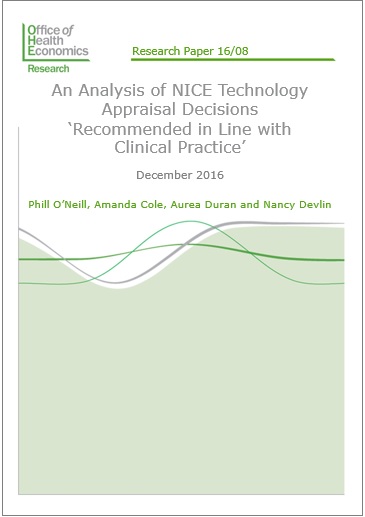This Research Paper explores decisions by the National Institute for Health and Care Excellence (NICE) that new technologies are to be recommended in line with clinical practice (RiLCP). The authors qualitatively assess documentation associated with RiLCP decisions to create a framework to describe common themes, and assess the level of patient access associated with each RiLCP decision.
This Research Paper explores decisions by the National Institute for Health and Care Excellence (NICE) that new technologies are to be recommended in line with clinical practice (RiLCP). The authors qualitatively assess documentation associated with RiLCP decisions to create a framework to describe common themes, and assess the level of patient access associated with each RiLCP decision.
Between January 2007 and June 2016 nearly a quarter (89 of 407) of all National Institute for Health and Care Excellence (NICE)-reported decisions for individual technologies assessed through their technology appraisal (TA) process have been characterised by them as recommended in line with clinical practice (RiLCP), to be distinguished from recommended in line with marketing authorisation. These RiLCP decisions are counted as ‘recommended’ in NICE statistics summarising technology appraisal (TA) decision outcomes, and 44% percent (89 of 203) of all ‘recommended’ decisions in the period 2007-2016 are given this classification. The objectives of this study are twofold: First, we qualitatively assess documentation associated with RiLCP decisions to create a framework to describe common themes and criteria used to reach those decisions. Second, we assess the level of patient access associated with each RiLCP decision using a previously developed method – the ‘M’ score.


